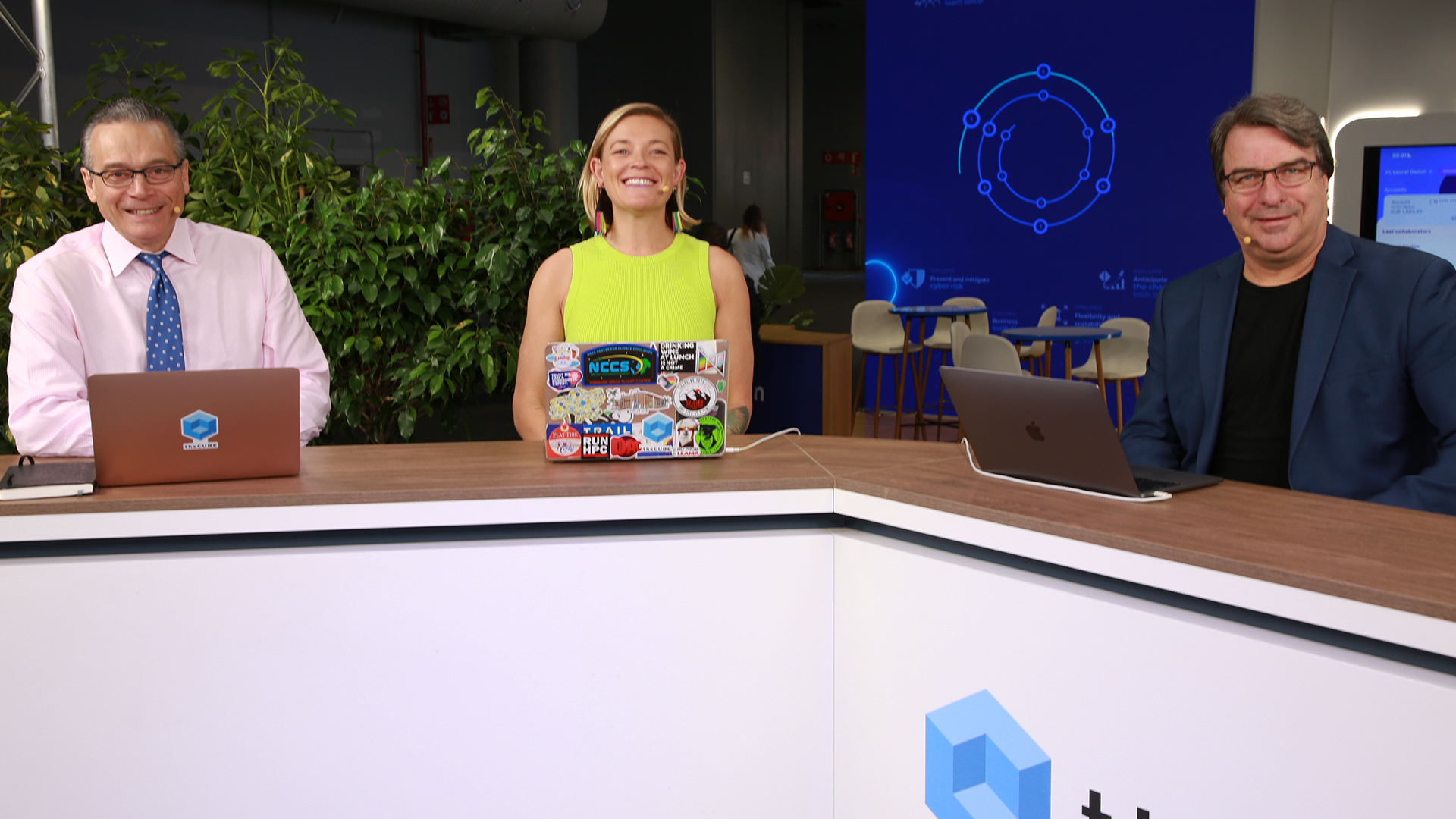 AI
AI
 AI
AI
 AI
AI
From the battlegrounds of networking supremacy to the frontiers of edge computing and artificial intelligence integration, Mobile World Congress 2024 encapsulated the spirit of innovation and collaboration driving progress in the digital age.
TheCUBE’s live coverage at this week’s conference looked at the groundbreaking revelations that unfolded over the course of the event — from the shift in networking dynamics to the evolving realms of edge computing and AI integration.
“AI is forcing the telcos to change,” said John Furrier (pictured right), theCUBE Research executive analyst. “The big revelation here on theCUBE this week is 5G is a great technology, from a fixed wireless perspective, but no one’s buying it.”
Furrier was joined by fellow analysts Dave Vellante (left) and Savannah Peterson (second from left) during a theCUBE analysis segment at MWC Barcelona, during an exclusive broadcast on theCUBE, SiliconANGLE Media’s livestreaming studio. They discussed the pivotal moments and key insights that unfolded over the course of the event. (* Disclosure below.)
One of the central themes dominating conversations at MWC24 revolved around the seismic shift in the networking arena catalyzed by Hewlett Packard Enterprise Co.’s acquisition of Juniper Networks Inc. This strategic move not only challenges the dominance of networking giant Cisco Systems Inc., but also reshapes the competitive landscape, according to Furrier. TheCUBE interviewed both CEOs from HPE and Juniper during the event.
“The Juniper-HPE deal was the biggest announcement, I thought, in networking this year,” Furrier said.
With Juniper’s formidable technology arsenal bolstered by HPE’s resources, organizations are presented with a compelling alternative, raising questions about the future direction of the industry. Amid Cisco’s internal challenges, including layoffs and AI strategy refinement, the stage is set for a fierce competition where each player vies for market supremacy.
“Juniper always competes with Cisco, but Cisco always dominated Juniper,” Furrier said. “Juniper had the service provider business, but when they got acquired by HPE, it put a formidable competitor on the field against Cisco. And Cisco with their challenges, the layoffs and their product platform, AI strategy not yet in view, puts them at risk.”
Moreover, the emergence of Broadcom Inc. and Nvidia Corp. as frontrunners in supplying crucial components for AI-driven cluster systems signifies a paradigm shift in data center architecture. As clusters become the new norm, the significance of networking infrastructure amplifies, positioning companies such as HPE and Dell Technologies Inc. to capitalize on the burgeoning AI market. This shift underscores the resurgence of networking as the linchpin of technological advancement, with implications extending beyond conventional realms.
“Broadcom is a major player here,” Vellante said. “There’s a company with a $600 billion valuation. They really are right now the number two AI play behind Nvidia. I think a lot of people don’t realize that.”
Another compelling narrative emerging from MWC revolves around the convergence of edge computing and AI, heralding a new era of innovation.
Qualcomm Inc.’s exposition on running AI on devices underscores the transformative potential of edge computing, bridging the gap between theoretical discourse and practical implementation. The proliferation of open-source models and AI-driven applications heralds a renaissance in edge computing, unlocking novel possibilities across diverse sectors.
“It’s a really exciting time for edge,” Peterson said. “When we can have this speed and the inference happening at the edge in our phones or in whatever device that is in the retail environment … it’s going to make the edge relevant in a way that it hasn’t been. There’s such a cool synergy happening right now where we’re going to be able to do all the things that we used to do in isolated environments and server environments on-prem at the edge.”
Here’s the complete video interview, part of SiliconANGLE’s and theCUBE Research’s coverage of MWC Barcelona:
(* Disclosure: TheCUBE is a paid media partner for the MWC Barcelona event. No sponsors have editorial control over content on theCUBE or SiliconANGLE.)
THANK YOU